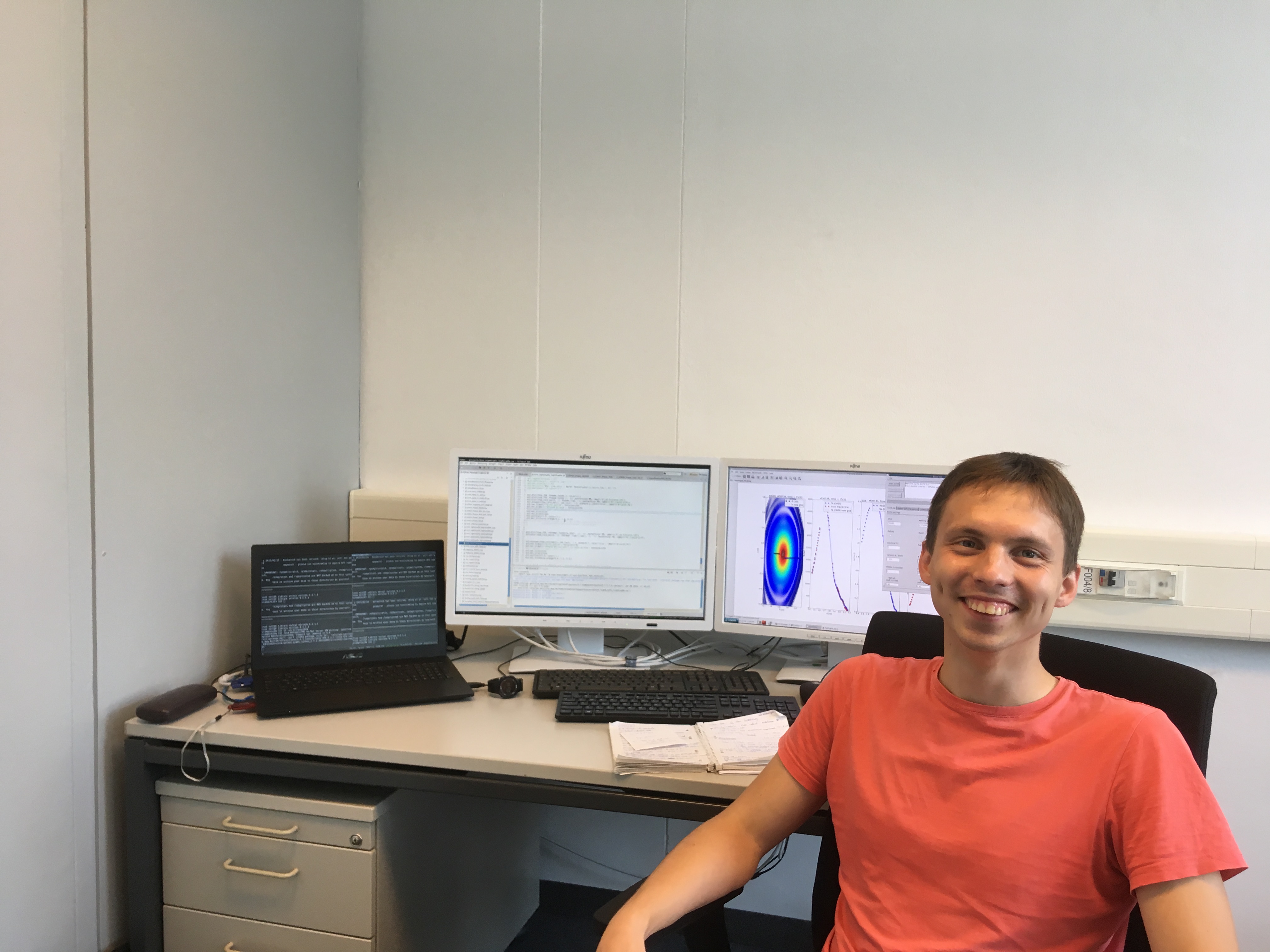One, who is interested in plasma physics or nuclear fusion, sooner or later might come across the name IPP Garching. The reason to that might be frequent mentioning of the name at conferences, well-written and remarkable articles with the name in the header, ASDEX Upgrade tokamak. Conversely, the name could be seen after the words "the first time discovered in ..."
IPP Garching stands for Max Planck Institute of Plasma Physics in Garching (Germany). I was lucky to do my Master thesis project there. My topic was modelling of the Electron cyclotron Transport of MHD modes in a tokamak geometry. Interestingly, I have been interested mostly in experimental physics and was always suspicious of numerical modelling results. Ironically, now my thesis starts with the word modelling. However, I have chosen the topic consciously with the aim to see myself what so many physicists find exciting in this area of the research. My Master’s thesis is concentrated on Magnetohydrodynamic-instability (MHD identification) identification in the edge of tokamak plasmas using the electron cyclotron emission (ECE) diagnostic. The instabilities might be harmful for the tokamak and might decrease its plasma performance. To avoid or suppress the instabilities, reliable identification is needed and in my thesis electron-cyclotron-transport modelling has been conducted to see what possible restrictions we might have in the instability identification using the ECE diagnostic.
I had a pleasant stay at IPP. Almost every day there were seminars, lectures and reports so you can easily get informed about (and enjoy) what other researchers are doing. There are plenty of students working on everything ranging from internships to PhD theses, so you can always find interesting company to spend time with. Garching is a 30-min drive from the center of the Munich, where there are events happening every day - festivals, performances, concerts and more. Nice place for work, nice place for amusement activities.
Text continues below the photo.

It is worth mentioning how good everything was organized. The secretary of the IPP was always there to help. They helped me with the accommodation, all the documents and office inventories. They even registered me for a free German language course. An interesting observation during my project at IPP was that nowadays fewer and fewer experimental physicists "work with iron" as we say in Russia, which means that the actual work with the tokamak chamber/diagnostic/plasma heating sources is conducted not by the physicists, but by the engineers and technicians, while the physicists are concentrated on the planning
Coming back to the modelling, now I admit that building a model that could describe the physical experiment and even predict its results might be an adventure. Still not as exciting as conducting an experiment, the numerical modelling has its charm and elegancy. I have enjoyed doing my thesis and decided to continue my scientific career at IPP as a PhD student.
To summarize, I am happy that I had the opportunity to do my thesis at IPP and am grateful to the FuseNet support for my Master’s thesis project.
- Oleg Samoylov
